Strategy and tactics
Strategy and tactics, two terms often used synonymously. Are they just different words for the same concept?
Here is the difference: Strategy is long term, tactics is short term.
Strategy is your grand plan, your idea, your active creation. It often reflects some of your basic character traits, so its very personal. Tactics is optimally speaking just about finishing off your opponent, earning the fruits of your superior strategy - or sub optimally speaking, its just reacting to your opponents threads or mistakes.
Tactics and chess puzzles
Many of the chess puzzles i know are of tactical nature. You have to calculate a check mate or material winning sequence in x moves. Can you spot the check mate in 6? (Provided by lichess.org - checkmate patterns II)
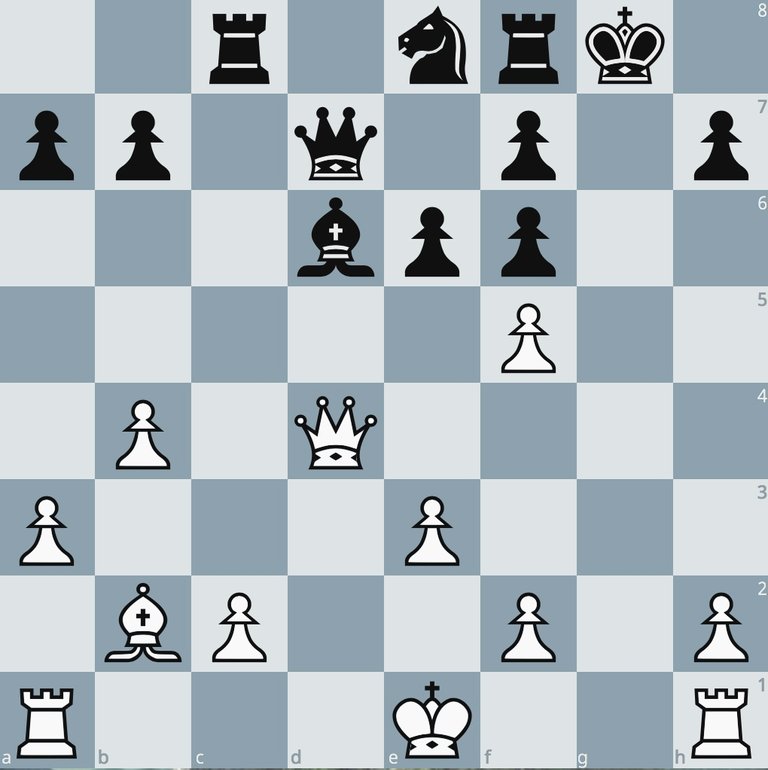
While developing this tactical, calculating ability is very important for your overall strength i find its just a boring tool. There is not much creativity involved. For the most part its raw calculation power with some pattern recognition - something that the dumbest machine will do in a far superior way.
Strategy based play
Strategy is what i love about chess and other games in general. Here is an example of one of my games (15m + 5s increment). The first picture is from a very early stage of the game. Only the dark squared bishops have been exchanged and my opponent played the last indicated pawn move. Immediately after this move there came an idea, a strategical plan to my mind. Can you spot it?

When i look at this position, the following thoughts come to mind:
- my bishop and pawn structure harmonize well (pawns control dark squares, bishop controls white squares), my opponents bishop and pawn structure do not harmonize --> my opponent's control over the dark squares is weakened and his bishop is blocked behind his pawns
- his last move f7-f5 created one big gap on e5. This square cannot be controlled anymore by any of his pawns and i have already pawn support on it
Out of these facts i developed the idea to try to exchange my bishop and one of my knights for my opponents knights and then place my remaining knight on the e5 square. In that scenario, my knight could not be kicked away from this square and it would threaten deadly forks at any time. It would be very disruptive, difficult to navigate around.
At the end of the opening we reached the following position:
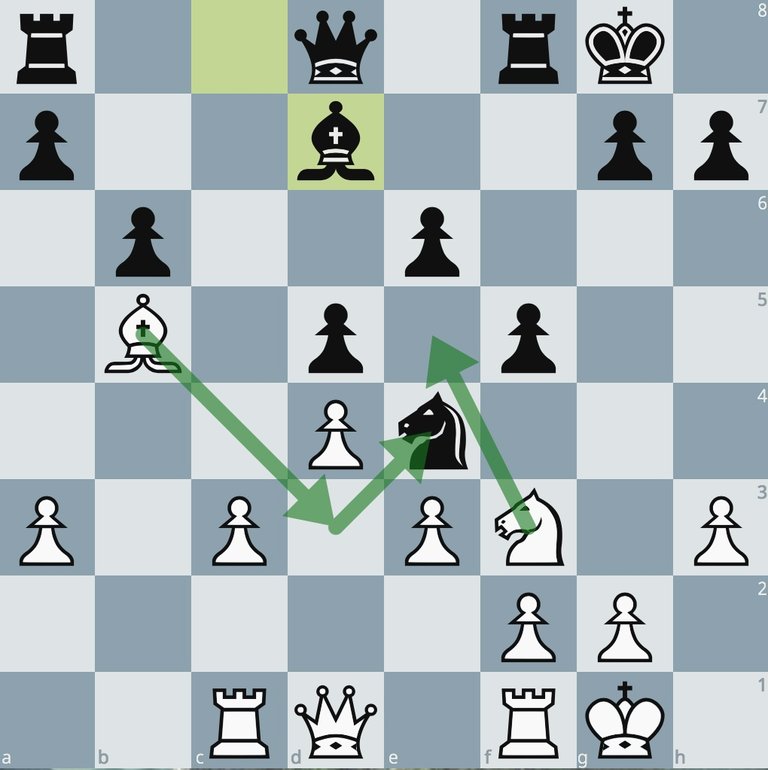
As stated before, i am of course not interested in a bishop exchange. My plan is indicated by the arrows - taking out the knight with my bishop and placing my knight on e5.
A couple moves later i reached the position that i had in mind from the beginning. However, i also made a strategical mistake - look at my c-pawn.
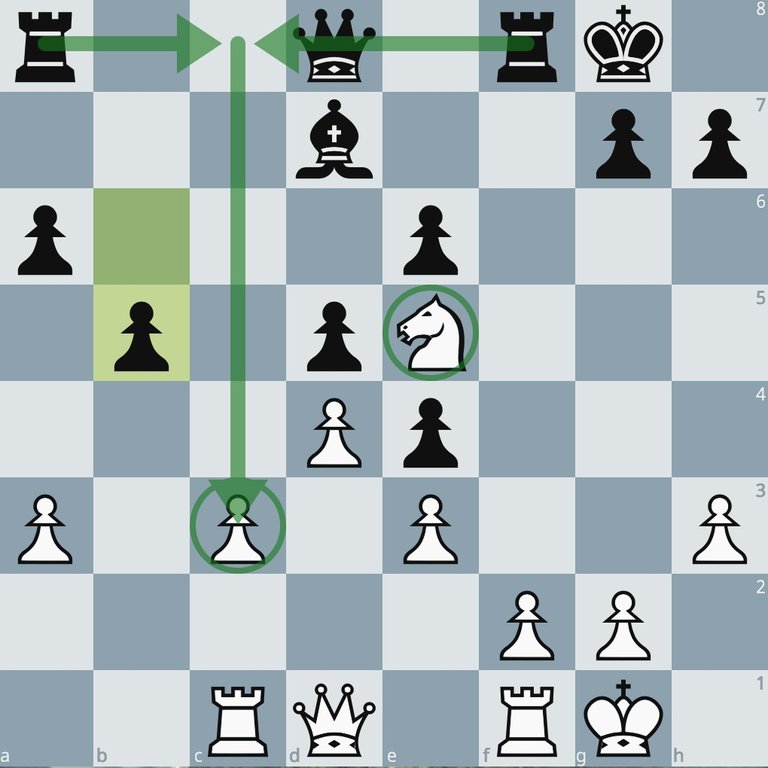
Its backwards, cannot move forward and can be attacked by the opponents heavy pieces. I overlooked this, because i was too focused on my own plan. Instead, i should have tried to move forward with the c-pawn before my opponent played his pawn to b5.
My opponent recognized the strength of my knight and immediately sacrifized one of his rooks for my knight (indicated). At the same time, he did not try to punish my weak pawn, instead he even exchanged off the queens in a way which let me repair my weak pawn (indicated). I ended up in the following completely winning position:
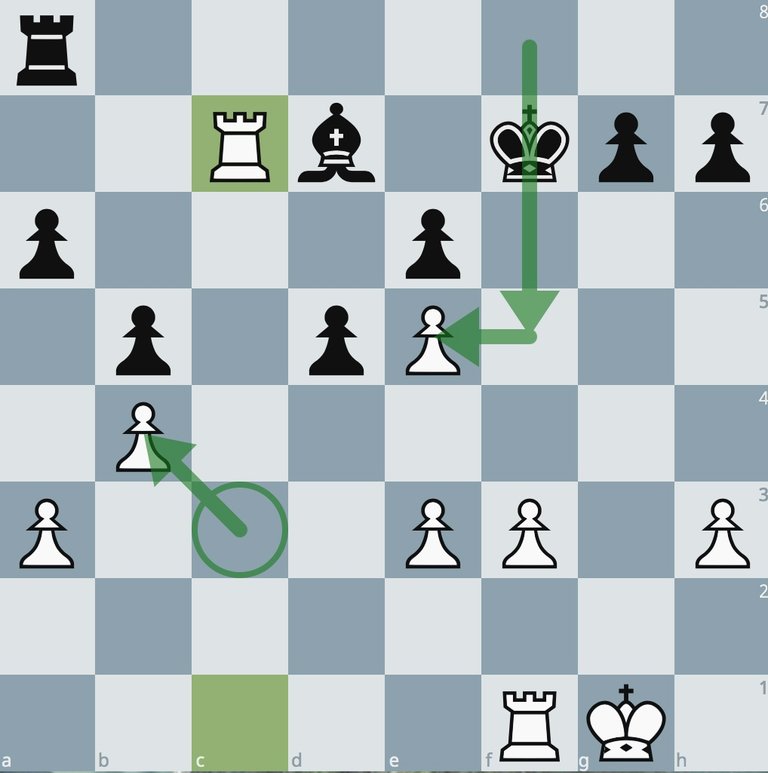
His bishop is still a very bad piece, its blocked and pinned, and my rooks have several open files to work with. However, i have spent a lot of my time to reach this position. I made several smaller tactical mistakes due to time pressure, so my huge advantage started to fade. After some pawns got exchanged, we reached the last position of the game that i want to show, which has an interesting strategical turnaround:
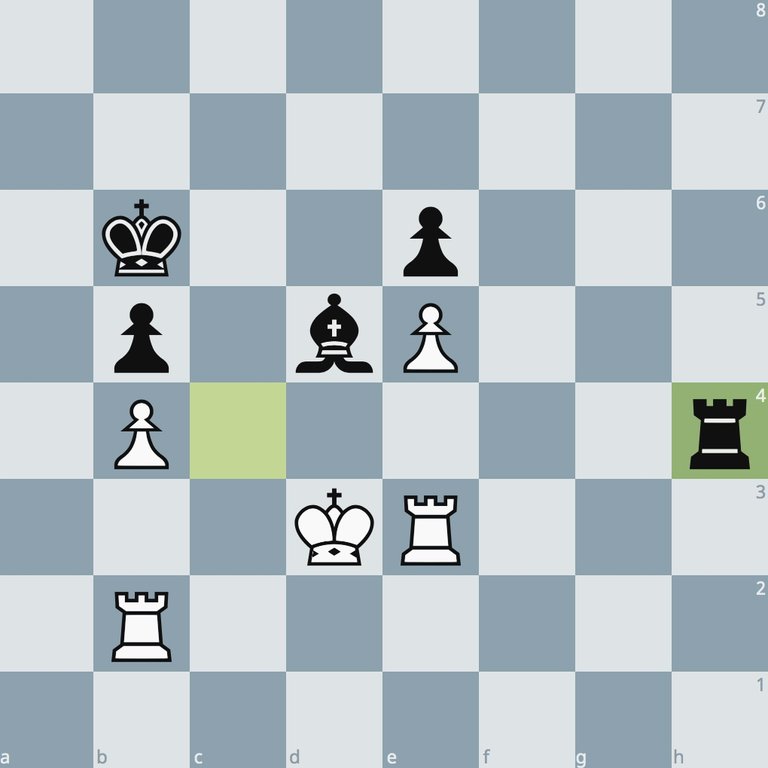
After being weak for the entire game, in the end the bishop is the key in blacks fortress. I did not anticipate this fact while i was exchanging pawns especially on the king side. The bishop can move between c4 and d5, always protecting the pawns and being protected by them. There is no good way forward for white anymore and after some shuffling and exchanging, this cool game ended up being a draw.
You can rewatch the game as a video (german) or replay it on lichess. Thanks to my opponent platonovich for the game and thank you for reading :)
I liked how you explained the difference between strategy and tatics at the start, according to your discription I'm too more strategy player than tactics one. But it's been a long time since I played Chess.
Can't believe this post didn't receive upvotes!EDIT: Oh, it's your first post? Wow!! It's really good and well written. I included it in my Gaming Daily.Hey ahmadmanga, thank you very much. I'm glad you liked it.